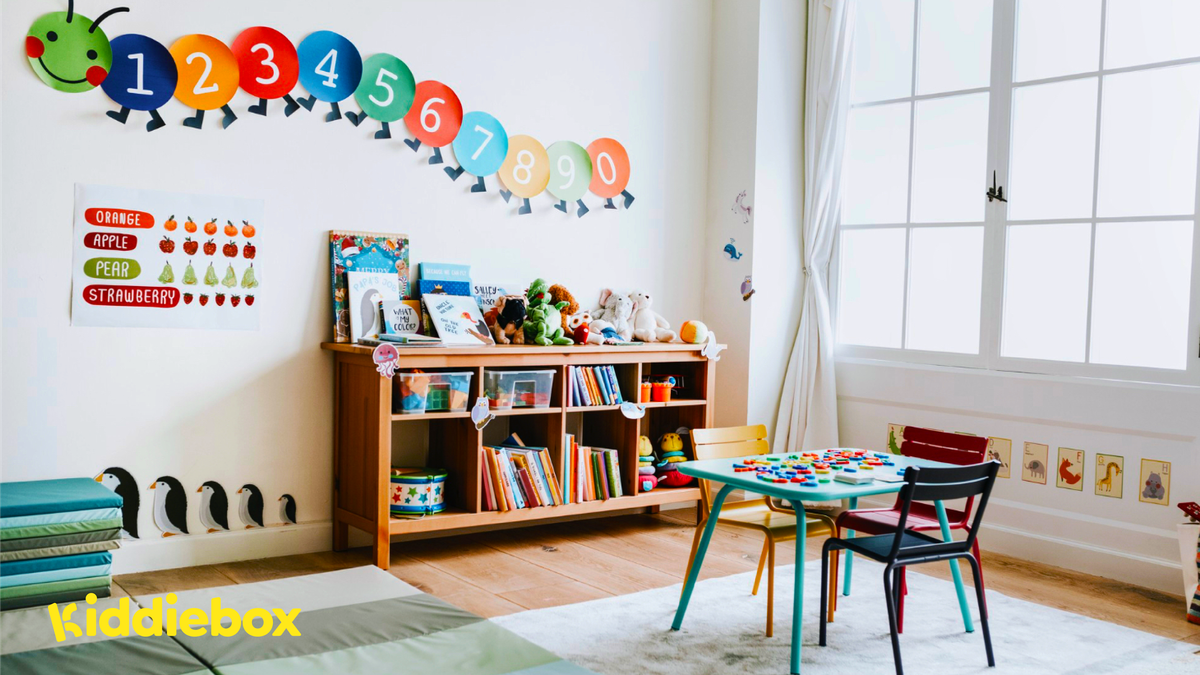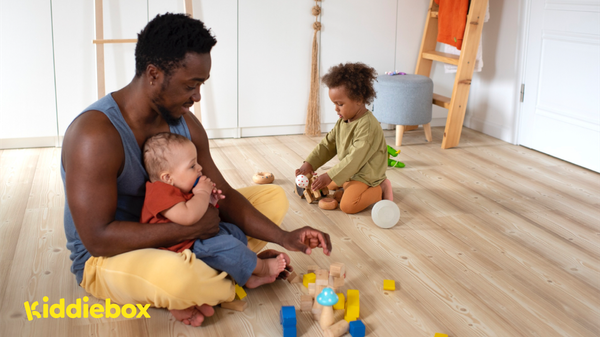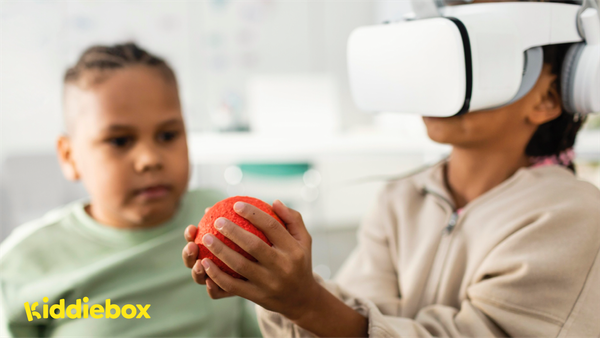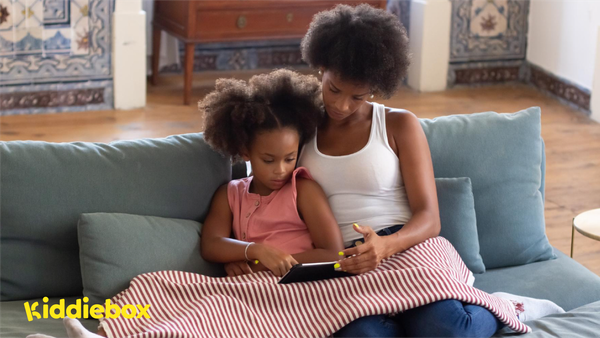What is EYFS and how can it be used for early childhood education

The Early Years Foundation Stage (EYFS) lays the foundation for your child's school readiness and future achievements, guiding their development from birth to age 5. Early Years Professionals adhere to the EYFS framework to monitor your child's progress and ensure they develop appropriately during this crucial stage of growth.
It provides a preschool curriculum that ensures a holistic approach to early childhood education, emphasizing the importance of nurturing a child's physical, social, emotional, and cognitive development during their formative years.
Let’s explore how to leverage its principles to foster a baby's growth and development effectively.
What is EYFS?
The EYFS refers to the Early Years Foundation Stage (EYFS). EYFS sets the standards for learning, development, and care of children from birth to 5 years. In other words, it guides the early childhood education of a child. EYFS applies to various educational settings and establishments across England, including schools and nurseries. It establishes developmental and learning standards for children.
All childcare settings and schools registered with Ofsted must adhere to EYFS guidelines to maintain consistent education across England.
For professionals in early years education, such as nursery nurses, reception teachers, and childminders, EYFS forms the core of their daily work. It plays a crucial role in providing high-quality learning experiences while ensuring children's health and safety. EYFS significantly impacts children's lives, laying the groundwork for their future development. Therefore, effective implementation of EYFS guidelines in settings is paramount.
The EYFS is detailed in the Statutory Framework for the Early Years Foundation Stage, which can be accessed here.
What to Expect in the Early Years Foundation Stage (EYFS)
The Early Years Foundation Stage (EYFS) is aimed at parents and provides insights into their child's progress within the EYFS framework.
The EYFS encompasses seven areas of learning and development, categorized into three age bands: birth to three, 3-4, and 4-5 (reception year in school). Within each band, there are suggestions for children's activities and parental involvement, recognizing that children develop at varying rates. The guide also includes top tips for enjoyable and interactive activities that parents and children can engage in at home for early learning following each age band.
Seven areas of learning and development in the EYFS
- Personal, Social and Emotional Development (PSED)
- Communication and Language (C+L)
- Physical Development (PD)
- Literacy (L)
- Mathematics (M)
- Understanding the World (UTW)
- Expressive Arts and Design (EAD)
The EYFS framework identifies three prime areas of learning and development: Personal, Social, and Emotional Development, Communication and Language, and Physical Development. These areas form fundamental building blocks for all subsequent learning endeavors and ignite children’s curiosity and enthusiasm for learning.
The three prime areas are strengthened and applied through the four specific areas of learning and development in EYFS: Literacy, Mathematics, Understanding the World, and Expressive Arts and Design. These areas provide avenues for the application and reinforcement of the prime areas. Each of these holds equal significance and is interconnected. Children undergo assessments against the Early Learning Goals by the end of the reception year to determine their progress. These assessments gauge whether children have met the expected milestones within each area of learning and development.
Understanding your child’s development
Children's development progresses uniquely and at varying paces without a uniform trajectory. Understanding child development is paramount for parents and individuals in early childhood education. It is the foundation for effective practice in supporting children, enabling practitioners to discern what is best for each child based on their unique needs.
Familiarity with developmental milestones, learning processes, and behavioral patterns equips parents and professionals with the insight needed to comprehend children's behaviors and provide tailored support along their developmental journey.
While children generally follow a universal development pattern, it's crucial to acknowledge that each child progresses at their own pace. Discrepancies in development rates are common, with some excelling in certain areas while progressing more slowly in others. This variation is natural and tends to balance over time as children navigate through different stages, such as crawling, standing, and walking.
The cornerstone for parents and teachers lies in understanding the children's developmental stage, identifying their current progress, assessing their next steps, identifying their interests, and determining the most effective methods to support their learning and growth. This comprehensive understanding enables practitioners to ascertain their assigned children's specific needs and ensures that continuous provision and planned activities are tailored to meet those needs.
Kiddiebox, an early child care management software, makes this easy with its AI assistant, Emily. With recorded data, Emily can make recommendations for a child's next step, interests, activities, and meals, among other things.
Understanding a child's development is vital for effectively interpreting and implementing this approach. While the inspection framework emphasizes certain aspects, such as physical development and language acquisition milestones, others, like mathematical concepts and less apparent areas of development, demand a deeper understanding.
While Ofsted acknowledges children's holistic development across various areas, it underscores that such progress cannot be coerced but rather supported and nurtured until the child is developmentally prepared. This readiness hinges on thoroughly understanding the child's developmental stage and individual learning journey.
How to Utilize EYFS for a Child’s Growth as a Parent
- Create a Nurturing Environment: Create a supportive and nurturing environment at home that encourages your baby to explore, play, and interact with their surroundings. Provide plenty of opportunities for sensory experiences, such as touching different textures, listening to music, and exploring nature.
- Promote Learning: Engage in meaningful conversations with your baby and respond to their babbling and cooing sounds. Read books together, sing nursery rhymes, and introduce new vocabulary to support their language acquisition. Encourage them to express their thoughts and feelings through gestures and words.
- Physical Activity: Support your baby's physical development by providing ample opportunities for movement and play. Provide age-appropriate toys and activities that promote crawling, walking, reaching, and grasping. Spend time outdoors exploring the natural environment and engaging in active play.
- Social Skills: Help your baby develop social skills by exposing them to positive social interactions with family members, caregivers, and other children. Arrange playdates, attend parent-child groups, and participate in community activities to promote socialization and cooperation.
- Introduce Early Learning Concepts: Incorporate early learning concepts into everyday activities to stimulate your baby's cognitive development. Count objects during playtime, identify shapes and colors, and introduce simple puzzles and games that encourage problem-solving skills.
- Monitor Progress: Keep track of your baby's development milestones and celebrate their achievements along the way. Be observant of their progress in various areas of development and offer praise and encouragement to support their continued growth.
By embracing the principles of the Early Years Foundation Stage (EYFS) and integrating them into your daily routines and interactions with your baby, you can create a nurturing environment that supports their growth and development during their early years.



